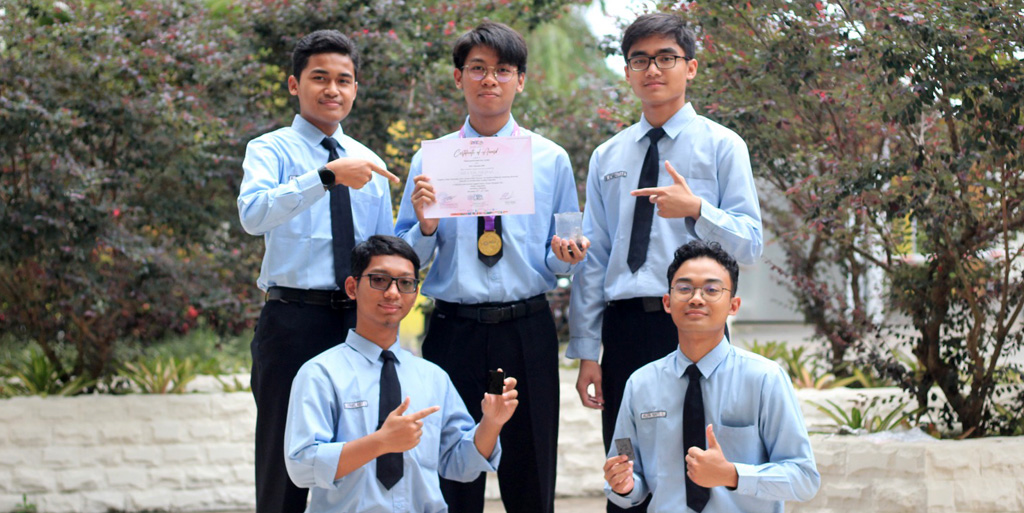Thursina IIBS Students Clinch I2ASPO Silver Medal with Groundbreaking Research on Aircraft Outer Coatings
Thursina International Islamic Boarding School (IIBS) students brilliantly excelled at Intenational Applied Science Project Olympiad (I2ASPO). The research group which consisted of Muhammad Imam Kayyis, Muhammad Rafi Kalevi, Alfa Nafi Ikhsando, Muhammad Gymnastiar Josivaneo, and Muhammad Syamil Abiy Syathir, proudly brought home silver medals from the prestigious competition.
The group’s research is based on the utilization coconut as a raw material for the production of graphene oxide using the modified version Hummers method, adapted from previous study. Their paper was titled Fabrication of Graphene Oxide from Charcoal Coconut Shells: Empirical Study to Increase the Composite Materials Absorbency of Aircraft Outer Coating.

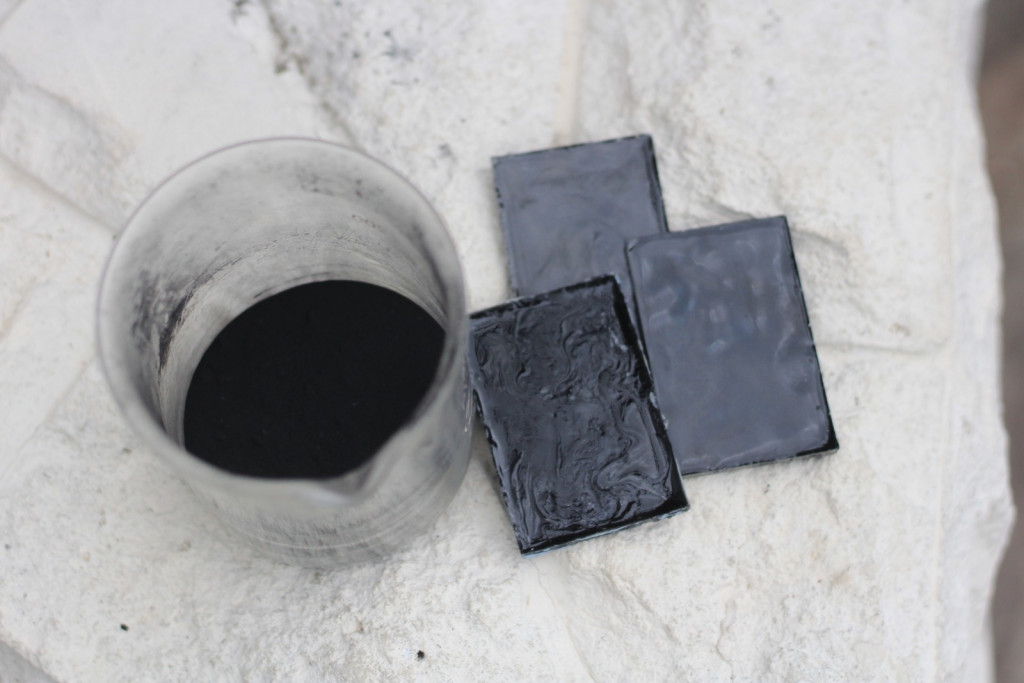
The initial stage involved processing the coconut to produce graphite powder which was then filtered to reach the ideal size of 75 μm. To remove dirt and other impurities, the graphite powder was treated using hydrofluoric acid (HF), followed by thorough washing with water and adding sodium hydroxide (NaOH).
“In the next process, Graphene Oxide (GO) was synthesized using a modified Hummers method. Then, the charcoal-based graphite powder was mixed with NaNO3 (sodium nitrate) in H2SO4 (sulfuric acid) and stirred for 30 minutes at a freezing temperature," explained Imam Kayyis.
According to Imam, the gradual addition of KMnO4 over a period of 3 hours at a temperature of 20°-0°C would eventually produce a dark green solution. After additional stirring at 35°C for one hour, deionized water was added slowly, followed by sterilization. Hydrogen peroxide (H2O2) was then used to remove excess KMnO4, followed by a centrifugation process. The resulting precipitate was heated at 110°C for 12 hours to produce Graphene Oxide (GO) powder.

In the subsequent stage, the group carried out the sythesis of the EPOXY/GO using EPOXY resin and Graphene Oxide. Premium Crystal Clear High Gloss resin was utilized as Resin A and hardener was used as Resin B, with a mixing ratio of 2:1. Three different EPOXY/GO mixtures were made with varying GO concentration ratios.
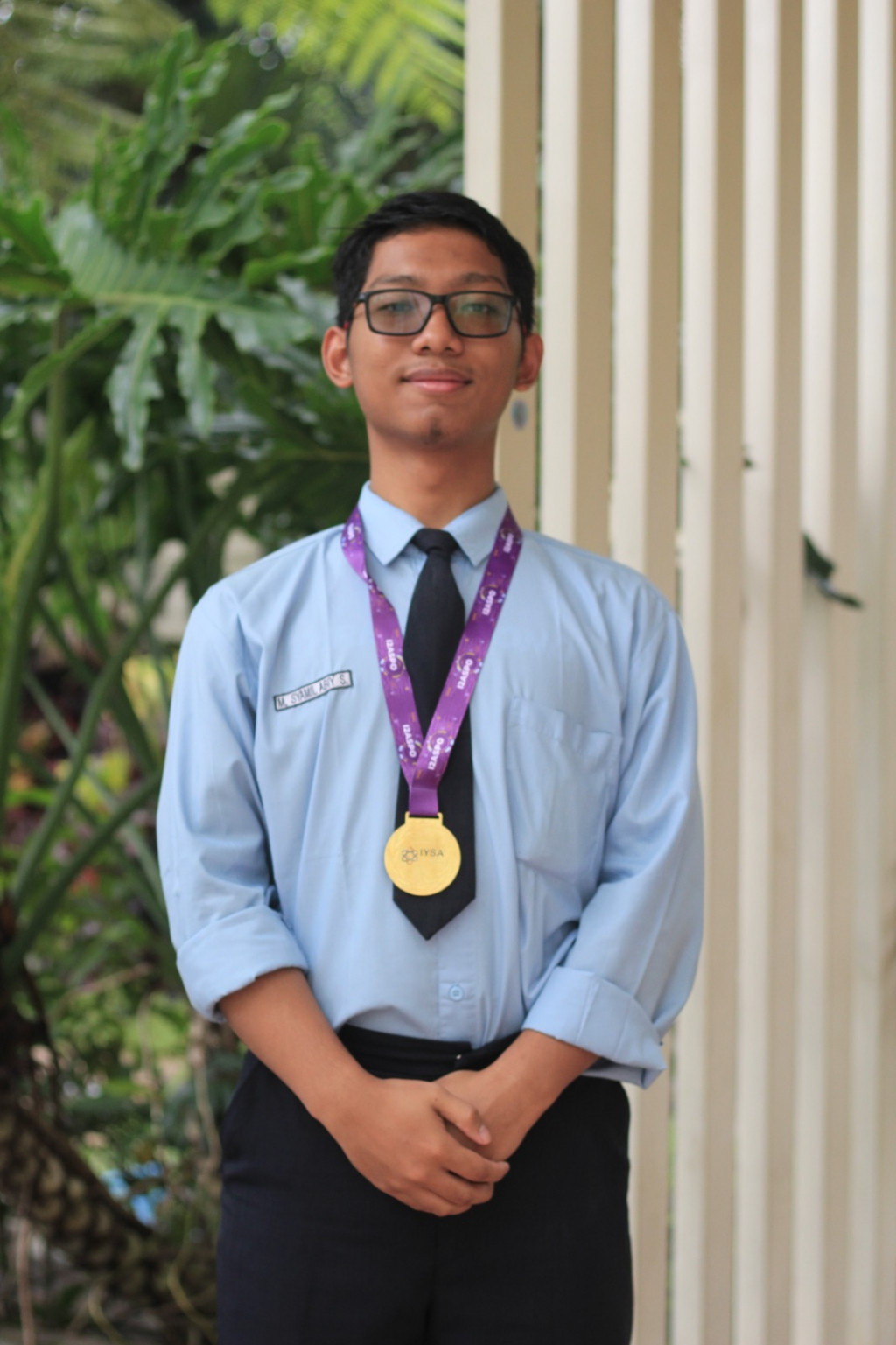

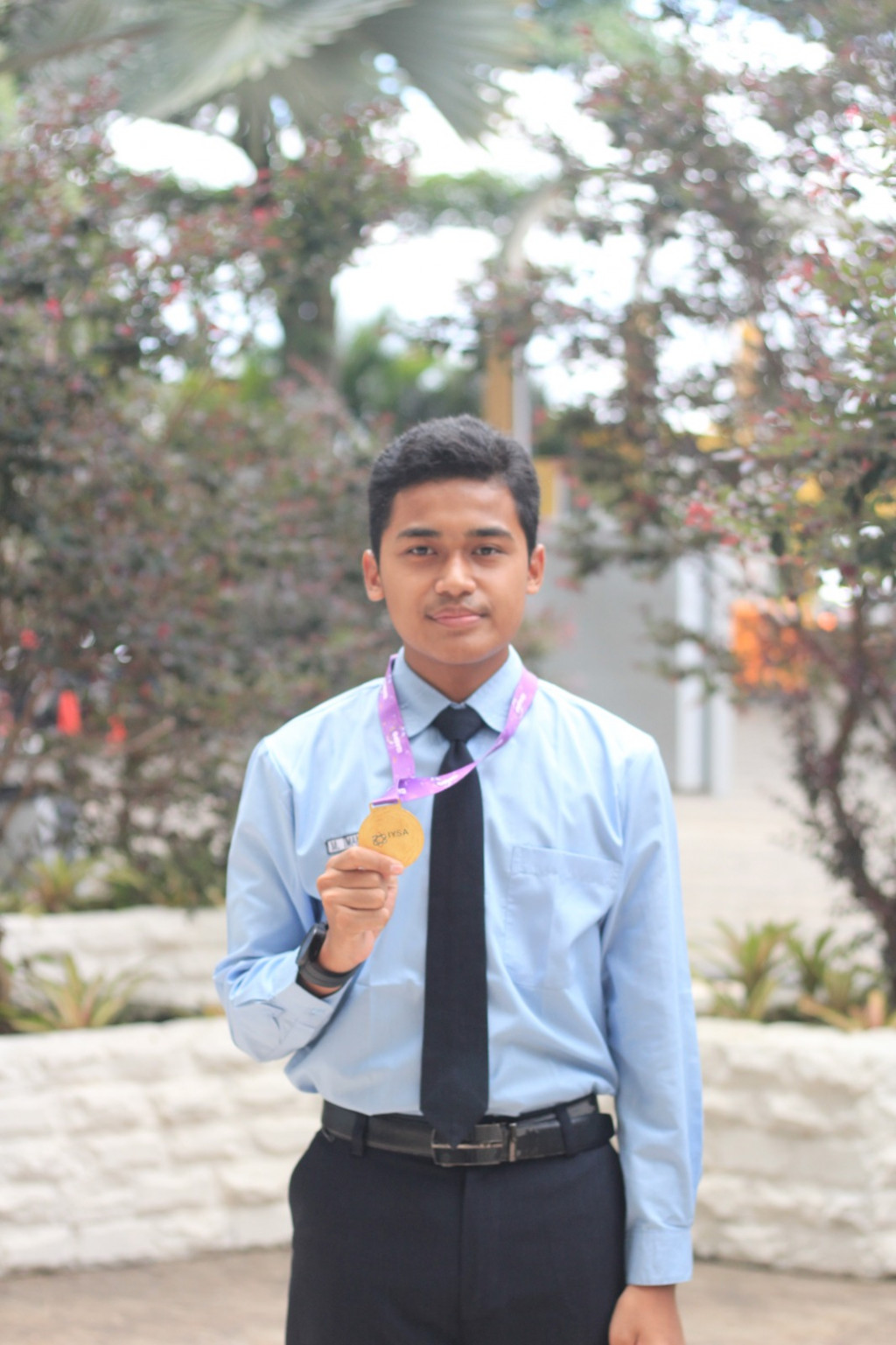
The mixing process was done by pouring resin A and B, followed by adding GO before combining the mixture in a rectangular mold. Homogenization process was subsequently carried out using ultrasonic cleaner, after which the mixture was dried using a hairdryer. The samples were then stored in a room temperature for a whole day. The result composite materials were eventually characterized using Variable-Notch Analysis (VNA) through Scanning Electron Microscopy (SEM) with Energy Dispersive X-ray (EDX).
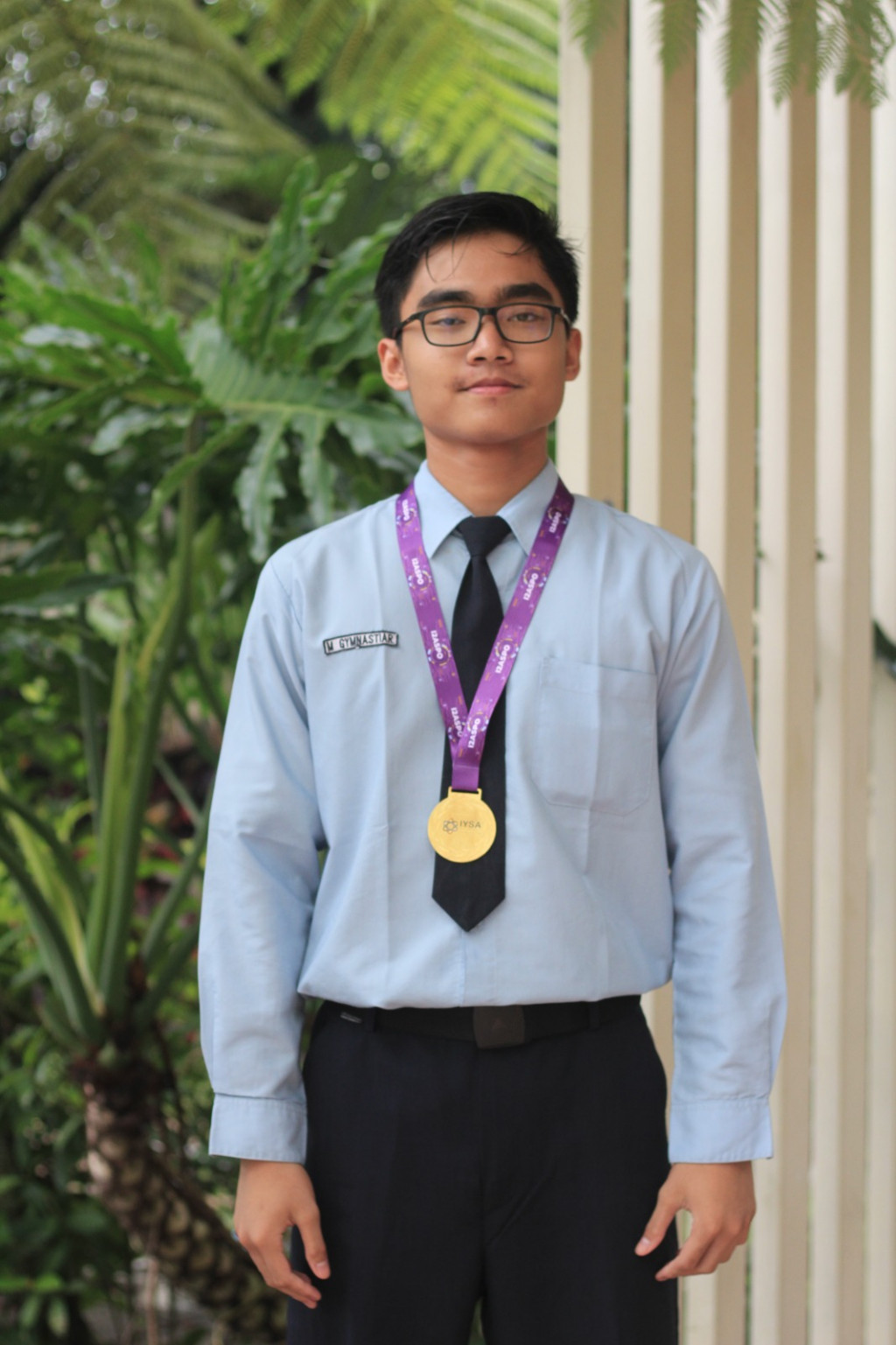
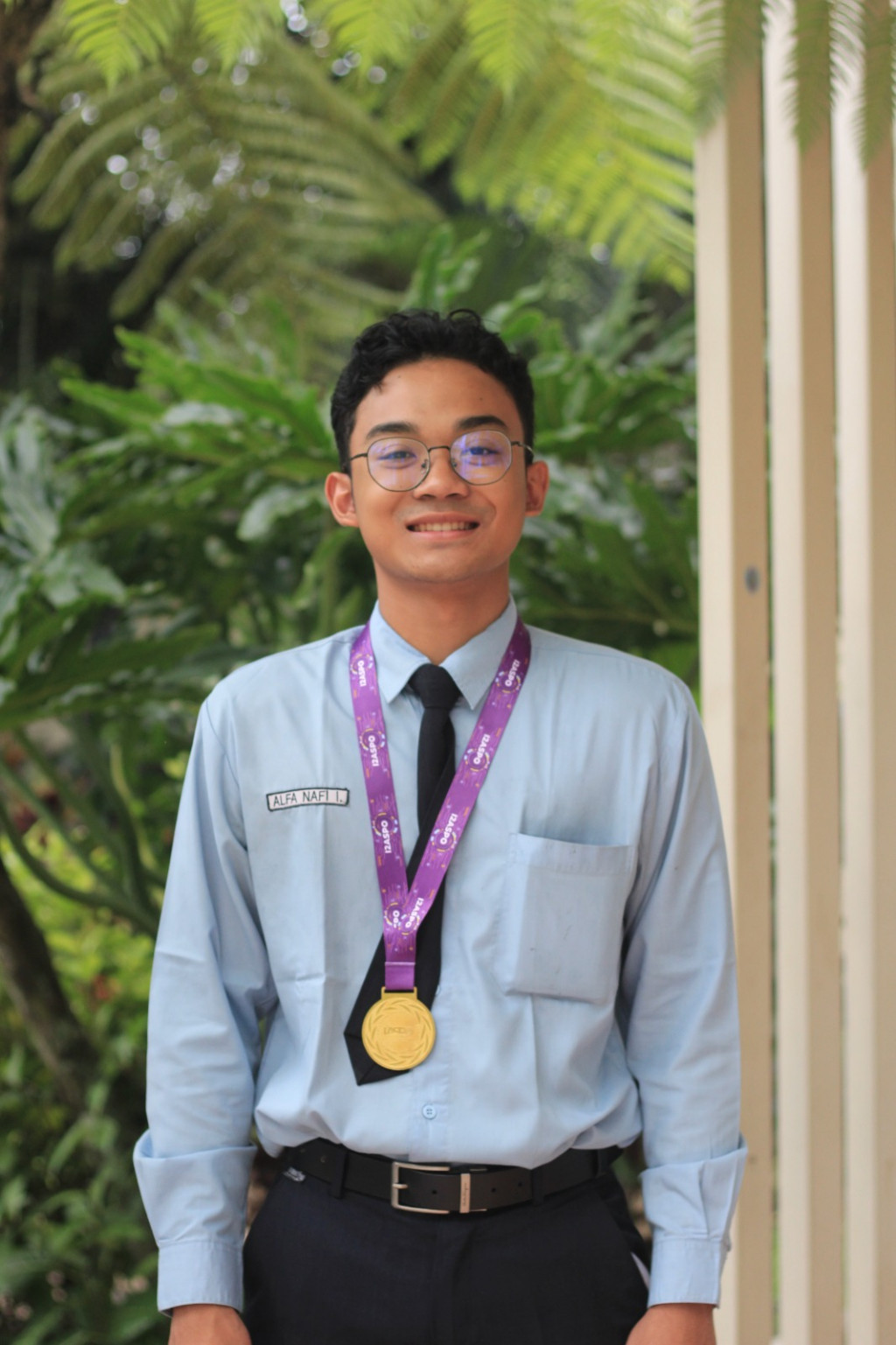
Through this research, Thursina IIBS students has shown their brilliant accomplishment on the field of applied science, cementing their reputation on the international stage.
